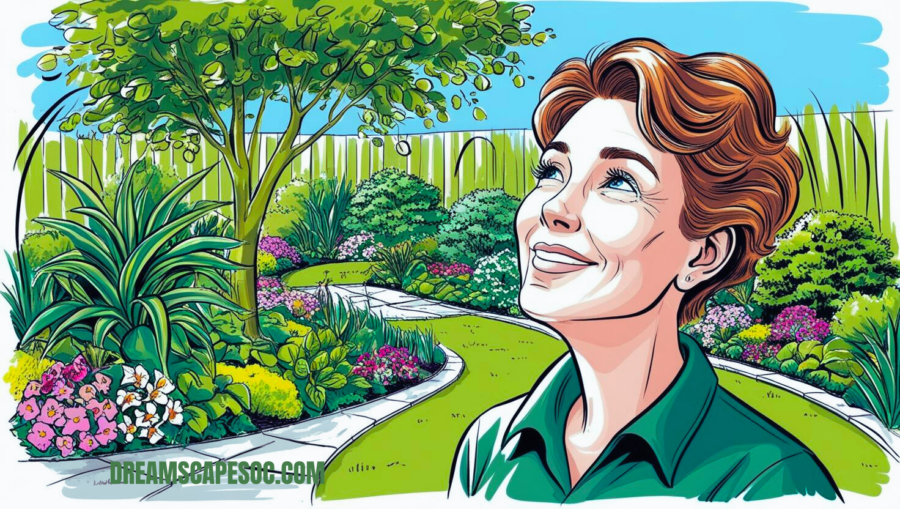Why Start an Indoor Herb Garden?
Indoor herb gardens offer benefits that go way beyond convenience. For one, growing herbs indoors gives you easy access to fresh ingredients, making cooking more enjoyable and helping you save on frequent herb purchases. Having your own supply of herbs on hand also means you’ll always have the freshest, most flavorful ingredients to enhance your meals.
Another advantage is health benefits. Adding fresh herbs to your meals without adding additional salt or sugar is a great way to organically boost their nutritional content. Not to mention the ambiance: indoor herb plants infuse your home with invigorating, natural scents and add a lovely splash of green.
Key Takeaway: Starting an indoor herb garden is an easy, budget-friendly way to enjoy fresh herbs year-round. It’s also a sustainable choice that adds flavor to meals and a bit of greenery to your space.
Elevate Your Outdoor Space—Explore Exclusive Landscaping Concepts
Choosing the Best Herbs for Indoor Growing
Not every herb will thrive indoors, so it’s helpful to start with varieties that adapt well to limited sunlight and indoor conditions. Some herbs are particularly suited for growing inside, making them easier to care for and more likely to stay healthy in your indoor garden.
Basil is an excellent herb to grow indoors, especially in a warm, sunny spot. It’s super versatile and adds flavor to everything from pasta and sauces to salads! Mint, on the other hand, is one of the easiest herbs to grow indoors because it’s resilient and tolerant of lower light levels. Rosemary is another popular choice. It loves a lot of sunlight and brings a delicious, earthy aroma to your space, making it perfect for savory dishes like roasted meats and vegetables.
Thyme and parsley are also solid choices, especially for beginners. Thyme grows well with lots of light and minimal watering, while parsley is hardy, easy to care for, and adds fresh flavor to numerous dishes. Cilantro grows fast and thrives with sunlight, adding bright, fresh notes to salads, salsas, and more.
Pro Tip: If you’re just starting out, try growing a few easy-to-manage herbs like mint or basil. Once you feel more confident, go ahead and add more varieties to your indoor herb garden!
| Herb | Light Needs | Extra Tips |
| Basil | Full sun, 6-8 hours | Loves warmth; keep it by a sunny window if possible. |
| Mint | Partial shade, 3-4 hours | Mint’s super adaptable, so it can handle lower light too. |
| Rosemary | Full sun, 6-8 hours | Needs lots of sun to thrive; consider a grow light if indoors. |
| Thyme | Full sun, 5-6 hours | Thrives with sunlight but won’t mind a bit of partial shade. |
| Parsley | Partial shade to full sun, 4-6 hours | Tolerates a range of light, making it great for indoors. |
| Cilantro | Full sun, 6-8 hours | Prefers bright light but wilts easily in strong afternoon sun. |
Transform Your Outdoor Space Today – Download Your Free Landscaping and Gardening Checklist

Setting Up Your Indoor Herb Garden
Creating a thriving indoor herb garden doesn’t require much space, but the setup is key to ensuring healthy, happy plants. Choosing the proper containers, soil, and location can make all the difference in how well your herbs grow.
Concerning containers, any pot with drainage holes will work well for indoor herbs. In order to prevent root rot, proper drainage is essential. , which can occur when water collects in the soil. You can choose from traditional pots or hanging planters, or even get creative with recycled containers. Just make sure there’s a way for excess water to escape. For soil, use a well-draining potting mix, ideally for indoor plants. A thin layer of rocks or stones placed at the pot’s bottom can also help with drainage.
Since most types of herbs require lots of light, choosing the right spot is essential. Herbs generally do best with about 6-8 hours of sunlight daily, so a sunny windowsill, ideally facing south, is perfect. But if natural light is limited, don’t worry. LED grow lights can mimic sunlight and provide a good alternative, especially during shorter winter days. Just be sure to keep your herbs in a space where the temperature stays comfortable, ideally between 65-75°F. Avoid placing them near heating vents or cold drafts, as extreme temperatures can stress the plants.
Quick Tip: Rotate your pots daily to ensure even sunlight exposure. This simple step helps keep your plants growing upright and balanced.
Planting and Caring for Your Indoor Herbs
To get your indoor herb garden off to a great start, it helps to know whether to begin with seeds or seedlings. If you’re patient, growing herbs from seeds can be a fun and rewarding experience as you get to see the entire process unfold. Plus, it’s an affordable way to try out different herbs. But if you’re looking for a faster, easier option, buying established seedlings from a nursery is a fantastic choice, especially if you’re new to indoor gardening.
Watering is where many people go wrong with indoor herbs, but it’s actually pretty simple once you get the hang of it. Most herbs prefer to be watered only when the top inch of soil feels dry to the touch. Overwatering can cause root rot, so it’s best to water less rather than more. Feeding is also helpful. Indoor herbs benefit from a balanced, water-soluble fertilizer every 4-6 weeks, which helps them stay lush and green.
Pruning is another step that promotes healthy growth. By trimming your herbs regularly, you encourage them to stay compact and produce more leaves. When harvesting, cut the leaves from the top of the plant. Not only does this provide fresh herbs for your cooking, but it also encourages the plant to keep growing.
Troubleshooting Common Indoor Herb Garden Issues
Even with great care, indoor herb gardens can still encounter some challenges. One common issue is insufficient light, which often causes herbs to stretch toward the light source or look pale. If this happens, try moving your plants closer to a window or consider adding a grow light to supplement the natural light.
Pests are another potential issue, though they’re less common indoors than outside. Indoor herbs can sometimes attract aphids, spider mites, or fungus gnats. The best way to prevent these pests is to inspect your plants regularly and treat any infestations quickly with organic options like insecticidal soap or neem oil. Avoid packing your herbs too closely together as this also helps to lower the chance of bug accumulation.
Mold and mildew can grow if there’s too much humidity or poor drainage. To prevent mold growth, make sure your containers have good drainage, water only when needed, and monitor the humidity levels around your plants.
Creative Ways to Use Fresh Herbs
One of the best rewards of having fresh herbs in your home is getting creative with how you use them. Basil, rosemary, and thyme are all fantastic additions to everyday meals. Basil and thyme go wonderfully with Italian dishes, like pasta, pizza, and sauces, while rosemary is a delicious choice for roasted meats and root vegetables. Make your own herb-infused vinegars and oils if you’re feeling particularly daring. Simply place clean, dry herbs in a bottle of vinegar or olive oil, and after a week, you will have a tasty infusion that you can use as a garnish for food or as a marinade. Herb-enhanced butters and salts are also simple to make: chop fresh herbs and mix them into softened butter or coarse salt, then refrigerate. Add these mixtures to crusty bread, roasted vegetables, or grilled meats to bring out their flavors. Mint is excellent for bringing a crisp note of sweetness and brightness to teas, smoothies, and desserts.
Dive into related articles now for even sharper insights—you won’t regret it!
Transform Your Space: Indoor Gardening for Sustainable Living
Conclusion
You may enjoy fresh herbs whenever you want by starting an indoor herb garden, which is a terrific way to bring a little piece of nature inside. You may enjoy tasty herbs all year long with the correct setup and a little maintenance, which will improve your cuisine and bring some greenery into your home. It’s an exciting journey to create your own indoor herb garden, from choosing the best herbs to resolving frequent problems.
FAQs
How much sunlight do indoor herbs need?
Generally speaking, indoor plants require 6–8 hours of sunlight per day. Although a south-facing window is the best option, grow lights can be useful if natural light is scarce.
Can I grow herbs indoors year-round?
True! You can grow herbs indoors year-round, even in the winter, with the correct lighting and maintenance.
How can I tell if my herbs need more light?
If you notice your herbs stretching toward the light source or looking pale, they may need more light. Moving them closer to a light source or adding grow lights can help.
What can I do to prevent pests on indoor herbs?
Check your plants often for pests and use organic insecticidal soap or neem oil to tackle any problems. Also, ensure there’s good airflow and enough space between plants to keep pests at bay.

